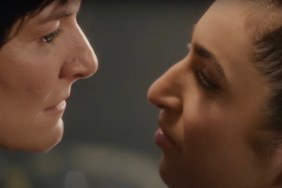The last record from English experimental rockers Muse was an epic exploration of scale and bombast that unfolded over several listens. It wasn’t instantly accessible, and had some die-hard fans offside from the get go, but most were eventually convinced that Black Holes and Revelations marked an important evolutionary step in the development of the band and their sound.
It’s not easy, then, for me to try and write a review of their new album, The Resistance, after only listening to the record the whole way through once. It is a dense work, with so many diverse elements and influences that just aren’t that clear at first glance.
There’s definitely a lot to take in. Muse are stretching the boundaries of, if not their own unique brand of alternative rock, then popular music in general. Like it or not, they’ve taken their classical, operatic influences and run with them.
Tracks like I Belong To You and Unnatural Selection are far more classical in structure and style than anything on their earlier records. These are meandering symphonies that build themselves up, collapse and slowly draw back together again. Bellamy is looking to take the listener on an epic journey, extracting every instrument from the arrangements and taking them each for a walk. This is not a record for those with a short attention span to be sure.
There’s still some similarity to their earlier releases like Black Holes, most notably on the first two tracks Uprising (which features a Dr. Who-style theremin) and Resistance, but the allusion to that record, and the general aesthetic of these two rockier tracks, might leave some screaming that The Resistance is just Black Holes ‘without the balls.’
Muse have shunned that ‘balls out’ approach for something more restrained and deliberate. The Resistance still rocks out sometimes, but Bellamy and co have made their intentions clear – bigger, even more grandiose arrangements; string sections and distorted synths that, at points, replace the chunky guitar riffs and fuzzed-out bass that were so characteristic of the Muse sound.
I’m still not sure how enamoured I am with The Resistance, but I can say that I definitely want to spend another couple of hours at least peeling back the layers and really getting inside these songs. It’s a grand evolution for a band that was never really content with re-hashing the same material. Listeners might be expecting an album full of Queen-esque rhapsodies like the lead single, United States of Eurasia, but there are some quite unexpected departures and aural sidesteps on the rest of the album; they’re not just trying to rip off Freddy Mercury.
Undisclosed Desires puts Bellamy’s subtle wail to a backdrop of synthed-out drums and an arpeggiated string section that I truly didn’t see coming. I couldn’t help but be reminded of the Jay-Z track ’99 Problems’ when I heard the interesting choice of accompaniment on this one.
The Resistance sounds perhaps like what ‘Joseph and the Amazing Technicolour Dreamcoat’ would sound like if it were played by members of Queen, Devo and Placebo, directed by Mozart while orbiting on the International Space Station.
Each song is a story in itself.












